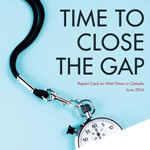 My 9-year-old plays Beethoven. Most people recognize it. My brother-in-law, a concert pianist, plays the same notes on the same piano with a different outcome.
My 9-year-old plays Beethoven. Most people recognize it. My brother-in-law, a concert pianist, plays the same notes on the same piano with a different outcome.
Same piano.
Same score.
Different outcome.
Identical structure and process do not produce an identical outcome. Health care obsesses over structure and process but, for the most part, ignores patient outcomes.
Donabedian first studied health system performance in the mid-20th century. He suggested we look at structure, process and outcomes.
Structure
Providers love to talk about structure.
“Just give us more beds/nurses/doctors/operating-room time…”
“We don’t have enough X, Y or Z!”
With Beethoven, you might say performer talent counts as structure, the raw materials. Fair enough. Even so, healthcare isn’t sophisticated enough, or brave enough, to differentiate between provider talents.
Process
Regulators love to talk about process.
“Standard of care; best practices; quality based procedures”
Ontario’s Quality Based Procedures focus on process. Essentially, QBPs define complicated tick-boxing to qualify for funding. They completely ignore patient experience and do not put patients first, ahead of process or budgets.
Despite medical miracles like heart transplantation, antibiotics and test-tube babies, the greatest leaps of innovation mostly ended in the mid-20th century. Healthcare distrusts innovation. No one wants to mess with success. We’d rather do more of the same or look to experts to tell us how to do it.
Outcomes
Patients care most about outcomes.
Inadequate structure plus innovative process can produce great outcomes. Dr. Venkataswamy developed an assembly line process to deliver cataract surgery, at a fraction of the cost, for millions of poor people with as good, or better, outcomes in the Aravind eye hospital in Mumbai. Dr. Venkataswamy could never develop an Avarind in North America. We obsess over process. We refuse to change without sufficient structure.
Venkataswamy focused on outcomes, first. He gave millions of poor people their sight without having money or surgeons to do so.
Patient Outcomes
We should start with the sound of Beethoven, with patient outcomes.
Focusing on structure and process, before outcomes, is backwards. We need to focus on what we hope to achieve, how we are going to measure success, and then fund structure and build process to deliver it. Not the other way around.
(photocredit: houstonpianocompany.com)


